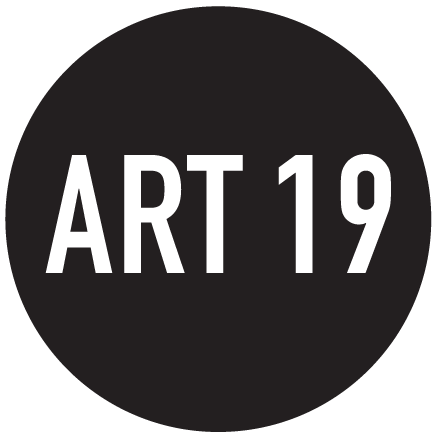The Korea Herald : William Kentridge returns with provocative works that ask rather than answer
South African visual artist and filmmaker's 'Sibyl' and 'Shostakovich 10' to be presented in Seoul in May.
"Sibyl" by William Kentridge (Steller Olivier).
This month, audiences in South Korea will once again encounter the haunting, layered world of the South African artist known for collapsing the boundaries between drawing, film, music and performance.
William Kentridge, whose diverse works have previously been showcased at the National Museum of Modern and Contemporary Art, Korea, the Asia Culture Center and the Amorepacific Museum of Art, returns to Seoul with two of his recent works under the GS Arts Center’s Artists series: "Sibyl," and multimedia symphonic project “Shostakovich 10: Oh To Believe in Another World” (2024).
William Kentridge (Steller Olivier).
These are not works that deliver answers. Rather, they raise questions that resonate long after the lights dim: “What does it mean to confront death?” “In whose land can someone be called ‘illegal?’” “What is the relationship of a composer to an authoritarian regime?”
To be performed Friday and Saturday at the GS Arts Center, "Sibyl," a double bill comprising “The Moment Has Gone” and “Waiting for the Sibyl,” offers Kentridge’s signature blend of visual art, performance and political commentary.
“They are like two short stories in a collection,” he said during a press conference Wednesday. “From the same world, not narratively linked, but they are linked by performers and both confront death.”
"Sibyl" by William Kentridge (Steller Olivier).
“The Moment Has Gone,” a 22-minute film with live singers, unfolds across three dimensions: footage of Kentridge drawing in his studio, poetic evocations of Johannesburg’s informal labor and the physical presence of the singers onstage.
In contrast, “Waiting for the Sibyl” transforms the ancient Roman myth of the Cumaean prophetess into a contemporary meditation on uncertainty. In the myth, seekers would write questions on oak leaves and leave them at the Sibyl’s cave, only to find that the wind had scattered their answers.
“You’d never know if you were getting your answer or someone else’s,” Kentridge said.
"The question of uncertainty, of not knowing one's fate, of what one's relationship was to one's death. These are all questions on the stage," he noted.
Both "The Moment Has Gone" and "Waiting for the Sibyl" feature music by composer and associate director Nhlanhla Mahlangu, who also hails from South Africa. They described their creative partnership as one that brings a “vertical” dimension to Kentridge’s “horizontal” practice.
South African visual artist and filmmaker William Kentridge (left) and composer Nhlanhla Mahlangu participate in a press conference held at the GS Arts Center in Seoul, Wednesday. (GS Arts Center).
When they started working together, Kentridge asked Mahlangu, "Can we find something that also goes down? So we've got the movement across, but to find music that winds down into our souls?"
Their collaboration would often lead to robust conversations that revealed quite different experiences of growing up in the same city of Johannesburg, a city marked by stark racial and economic divides that persist long after the official end of apartheid.
"('The Moment Has Gone') challenges the status quo, and it challenges our lives. We are confronted with something very specific: that we grow up in the same city, experiencing different things within the same city. It is a work that puts us in a robust conversation," Mahlangu said. "And the robust conversation is the illegal miners, in whose land are they illegal?"
William Kentridge's "Shostakovich 10: Oh To Believe in Another World" (Kentridge Studio).
On May 30, “Shostakovich 10: Oh To Believe in Another World,” Kentridge’s visual response to Shostakovich’s Symphony No. 10, will be performed with the Seoul Philharmonic Orchestra, led by conductor Roderick Cox. Projected behind the orchestra will be a film composed of cardboard models, cut-out masks and stop-motion imagery — a Constructivist visual universe that evokes Stalinist Russia.
“The symphony was first performed just months after Stalin’s death,” Kentridge noted. “Now we hear it as pure music, but it’s important to understand the context in which it was made.”
Characters such as revolutionaries Vladimir Lenin and Leon Trotsky, and the poet Vladimir Mayakovsky appear as cardboard silhouettes in a rusted, stiff puppet world. “It becomes a kind of stuck history,” Kentridge said, “with awkward, hard moves.”
"While the music flows continuously, the visuals hold tension,” he added.
Despite the political overtones, Kentridge resists the notion that his works preach. “In many ways, the arts, whether it's with music and theater or image, it is a place where these different questions come together not with an answer but to be discovered in the activity of making,” he said.
An official at the GS Arts Center explained that the two works were chosen to showcase contrasting aspects of Kentridge’s artistry. “'Sibyl' best encapsulates William Kentridge’s signature style,” the official told The Korea Herald. “In contrast, the other piece presents a different facet of his work — it engages not with African music but with classical music, and the medium shifts from charcoal to paper. These contrasts were compelling, which is why we decided to include both works.”
Written by Park Ga-Young for https://www.koreaherald.com/





